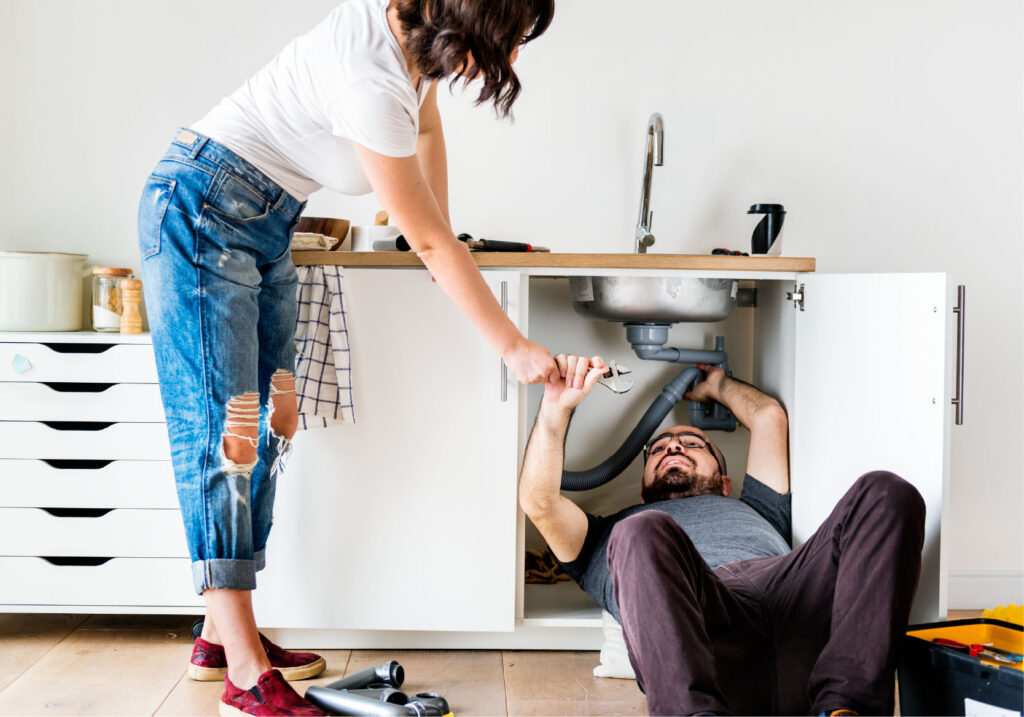Creating a safe home extends to the furry friends that you have under your roof. Your yard is their playground, and making sure that it’s properly secured is necessary in keeping them out of harm’s way–you never know what lengths they might go to to chase that squirrel. Picking the right fence design is important in providing your pet their own safe place.
Why Does “Buddy” Break Out?
There are several common reasons why your dog turns into a “hound-dini” and disappears out of your yard:
• Boredom or frustration
• Anxiety
• Fear
• High hunting instinct
• Disobedience
• Breed type
Luckily, you can be proactive to reduce your dog’s urge to run off. Regularly exercising, training, and playing with your dog can help alleviate the reasons for these conditions with canines. But letting your dog enjoy some fun in the sun while you’re away is still a nice treat.
The Paw-fect Match
Just as there are multiple reasons for your dog running away, there’s a variety of choices when it comes to the style of fencing. You should try to get to the bottom of what it is that’s causing your dog to get out, as fences are not a one size fits all.
Chainlink
One of the most common materials, chainlink is an inexpensive choice for homeowners. Chainlink is easy to install, requires minimal maintenance and can spruce up your yard’s look. For more privacy, you can grow vines or weave vinyl strips through the holes. However, what works for you might not work for your dog. If your dog has a high hunting instinct, they’ll be able to see any critter and try to chase after it. Larger breeds are even prone to climb up over the fence, while smaller ones can dig under it. Even worse, a determined dog might get caught in the fence with no way to get out, which could require emergency attention.
Wooden
A more expensive option, wood fencing has many of the same benefits as chainlink, with some extras. Wood is more durable and oftentimes taller than a simple chainlink fence. It’s also harder for dogs to dig under, especially if you add a digging deterrent spray or guard. To keep your dog from barking at other animals and people, skip the slats and opt for a solid style.. One downside of wooden fencing is that over time it can begin to rot and warp. If you have a chewer, they might be able to eventually tear away large chunks of fencing. This is bad for both your fence and your dog, as splinters of wood can get stuck in their digestive tract. Although wooden fencing adds some curb appeal and is sturdier than chainlink, it is higher maintenance.
Vinyl
Slightly more durable, vinyl fencing can help you avoid some of the problems that you get from wood. Vinyl isn’t as susceptible to the elements as wood, so you won’t need to worry about it deteriorating as quickly over time. It’s also very sturdy and won’t be easily damaged by your dog jumping or pawing at it. These pros do come without a price, however, and vinyl fencing is a major investment. In colder climates and depending on the fence itself, vinyl can crack from low temperatures and fluctuations. While the paint or finish on vinyl isn’t itself toxic to pets, it’s still not recommended that they chew on loose pieces.
Invisible or GPS
If you want that open look for your yard, then a hidden fence is your choice. You can enjoy that view you love and keep your dog from getting loose. These fences are fairly easy to set up and require minimal maintenance. Yet much like vinyl, electric or GPS fencing is near the top of the pricing chart. Another downside is that while it may keep your dog in, it doesn’t keep other people or animals out. You’ll also need to train your dog where the boundary is to prevent them from constantly getting shocked when they cross it. Not properly training your dog to avoid the shock perimeter could lead to negative behavior and make them more timid for fear of being punished.
Before you make a final decision on corralling your dog, get to know more about them and what causes them to escape. This way you’ll be able to find the right fit for their needs and your budget to give them a safe and fun play zone.
To make sure your home and its accompanying components are up to par for your family and pets, schedule an inspection with one of NPI’s professional inspectors.



